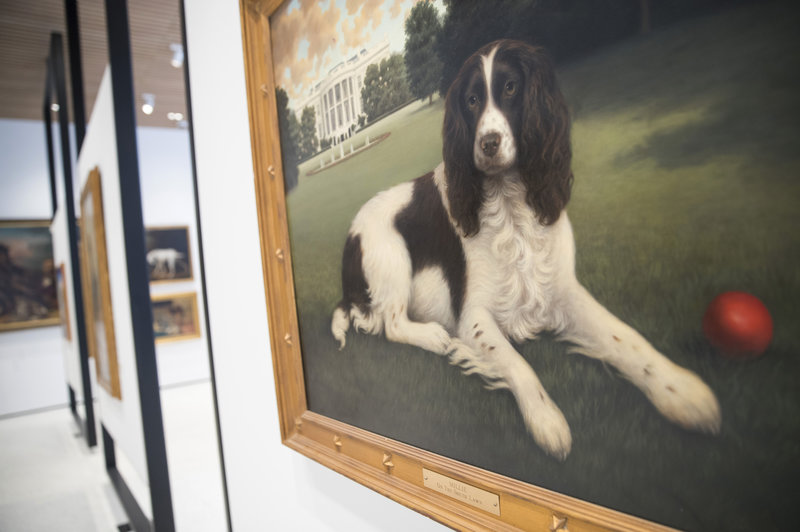The American Kennel Club is re-opening the Museum of the Dog in New York City on 8th February, after being moved to St.Louis, Missouri over 30 years ago.
The museum’s collection includes not only dog-related artwork, but also historical artefacts, like a skeleton of a canine ancestor hesperocyon, or a paw print dating back to the Roman Empire. In this sense, the establishment will also take on an educational role; the interactive Meet the Breeds table will display information of all 192 dog breeds recognised by the American Kennel Club, and a Find Your Match photo booth will find dog look-alikes of the museum’s human visitors. Moreover, the 101 Park Avenue building is also home to the American Kennel Club’s headquarters, library, and archives making access to information easier.
Even though the museum is expected to have an increased number of annual visitors (80,000 – 100,000 in the new site in comparison to 10,000 in St. Louis, statistics from artnet news), making it more accessible at face value, access to it is now taken away from the people of Missouri. Was the move planned to increase the accessibility of the museum, or was it a plan to increase income by exploiting the contemporary obsession with dogs? With over 60 million tourists a year (statistics from NYC & Company), New York City has a far broader outreach than any other city in the US.
The contemporary obsession with dogs is visible through social media, where most pictures of dogs get multiple likes and retweets. For example, The Dogist, a photographer from New York City who captures portraits of dogs, has over 3 million followers. Marnie The Dog, a 17 year old Shih Tzu who specialises in posting selfies, is followed by 2 million people on Instagram alone, surpassing many human bloggers.
Nevertheless, the museum has been open for over 30 years already. This highlights that it is not just today’s society that is dog-obsessed. However, the question is how long will a simple collection like this survive in one of the most interesting cities in the world, with museums on nearly every corner? Will the past repeat itself and see the museum relocate again, or will it become one of the city’s must-see places?
Whilst many may be sceptical to look at work that just features on dogs, in 2019, it’s time to abolish the distinction between high and low art. Who decides that the canine subject decreases the value of the artwork? We should not look down on the museum for displaying paintings of dogs, in the same way we do not look down on portraits of people. The artefacts hold historical and scientific value; the visitors will be able to find out what a pre-historic ancestor of the dog looked like, as well as find out how attitudes towards animals changed in different periods. Most importantly, the collection proves how valued dogs were throughout history.
The museum will display paintings from the likes of artists such as Sir Edwin Landseer, the man behind the lion sculptures in Trafalgar Square and of paintings commissioned by Queen Victoria. If his works are good enough for royalty, then they certainly deserve their own museum, now available for all. Furthermore, the museum also seems to put forward a breakthrough in curation; the artwork is categorised thematically rather than periodically, as it is done in most institutions, providing the viewer with a somewhat different art experience when they visit.
In its creation of exhibitions centered around a specific theme, the American Kennel Club seems to exploit a gap in the market, although it remains to be seen if any other art institutions will follow. With admission tickets ranging between $5 and $15, it is worth visiting the place dedicated to a man’s (and woman’s) best friend. Unfortunately, the friends will have to stay at home, as only service animals are allowed in the building.
Karolina Glasek
Image Courtesy of Mary Altaffer

